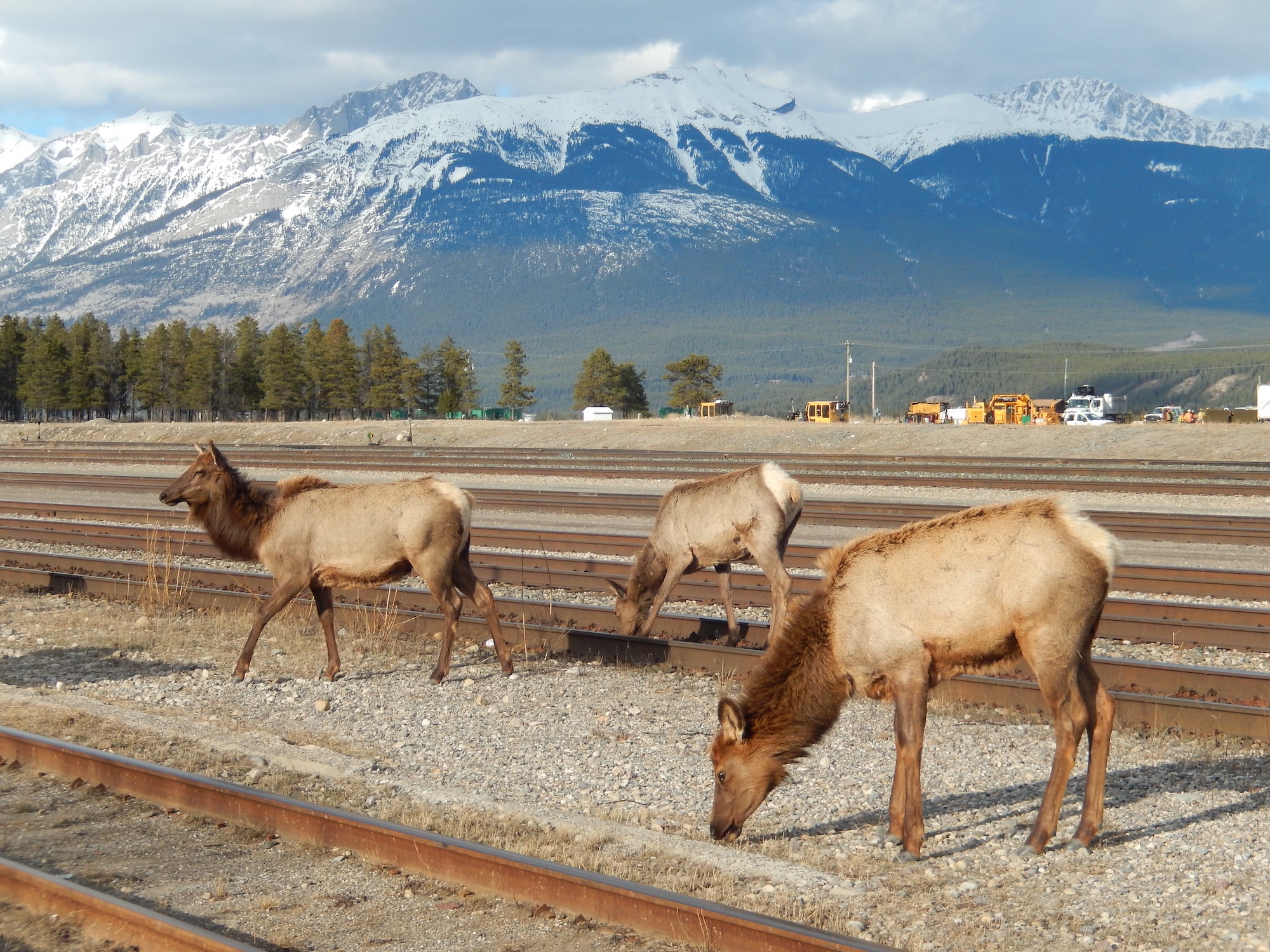Why the Canadian Rockies Are a Top Destination for Wildlife Enthusiasts
With vast landscapes, diverse ecosystems, and protected national parks, the Canadian Rockies are home to an incredible variety of wildlife. Grizzly bears, moose, elk, mountain goats, bald eagles, and many more iconic species can all be seen—sometimes in just one trip!
Summer is the prime season for wildlife viewing. Why? Longer daylight hours mean animals are active for a longer time. Many species are also in search of food for themselves or their young, making them more visible in valleys, along rivers, and even near roadsides.
Add to that the network of national parks, including Banff and Jasper, and it’s no wonder the Canadian Rockies rank high for nature lovers. These protected areas offer rich biodiversity and well-managed visitor access, increasing your chances of seeing wildlife in a responsible, respectful way.
Why join a guided tour?
While self-driving trips are possible, guided tours significantly improve your odds of spotting wildlife in the Canadian Rockies. Guides know where animals are most likely to appear based on time of day, recent sightings, and seasonal patterns. They also help you stay safe, provide insight into animal behaviour, and eliminate the stress of navigation, so you can focus on what you came to see.
What Animals Can You See in the Canadian Rockies in the Summer?
Bears
Both black bears and grizzly bears inhabit the Canadian Rockies. Summer is a particularly good time to spot them, especially in June and July, when berry season begins.
Where to look:
– Banff National Park: Look along the Bow Valley Parkway or near Lake Louise.
– Jasper National Park: Watch for bears grazing along the roadside between Jasper and Maligne Lake.
Best times: Early morning or dusk, especially in open meadows and near berry bushes.
Moose & Elk
Moose are solitary and often shy, but with some patience and timing, you might see them feeding near wetlands or forest edges. Elk are more social and frequently seen in herds.
Where to look:
– Moose: Early mornings near marshes like those around Maligne Lake and Pyramid Lake in Jasper.
– Elk: Often spotted near roadsides and in meadows throughout Banff and Jasper.
Tip: Elk can appear tame but are not. Always give them space and watch from a safe distance, especially during rutting season in late summer.
Mountain Goats & Big Horn Sheep
These agile climbers are often seen along rocky slopes and cliff faces at higher elevations.
Where to look:
– Big Horn Sheep: Often near the Icefields Parkway and Lake Minnewanka area.
– Mountain Goats: Frequently seen on cliffs above highways or near glacier viewpoints.
Best viewed from: Scenic pullouts—no need to go far off the road.
Bald Eagles & Other Birds
Summer brings excellent birdwatching, particularly near lakes and rivers.
Top birds to spot:
– Bald Eagles: Seen soaring or perched near lakes like Moraine Lake or along rivers.
– Ospreys: Active fishers are often spotted diving near open water.
– Clark’s Nutcracker & Grey Jays: Found in subalpine forests—don’t feed them, even if they approach!
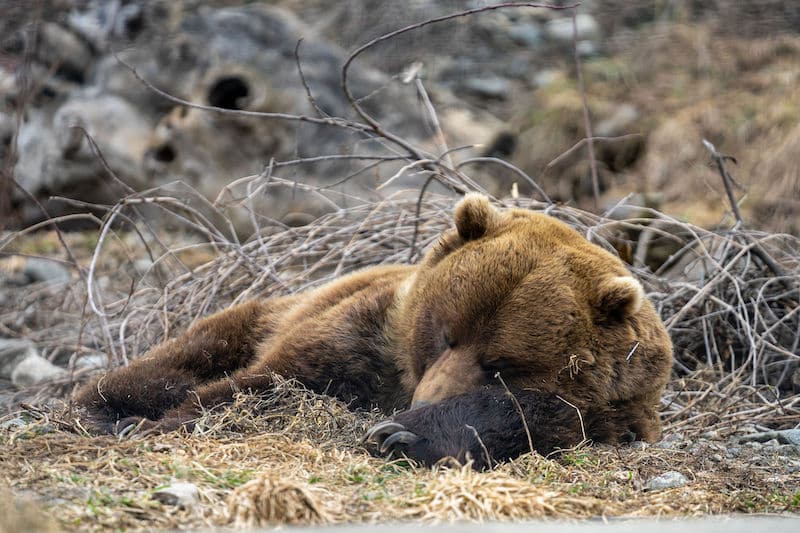
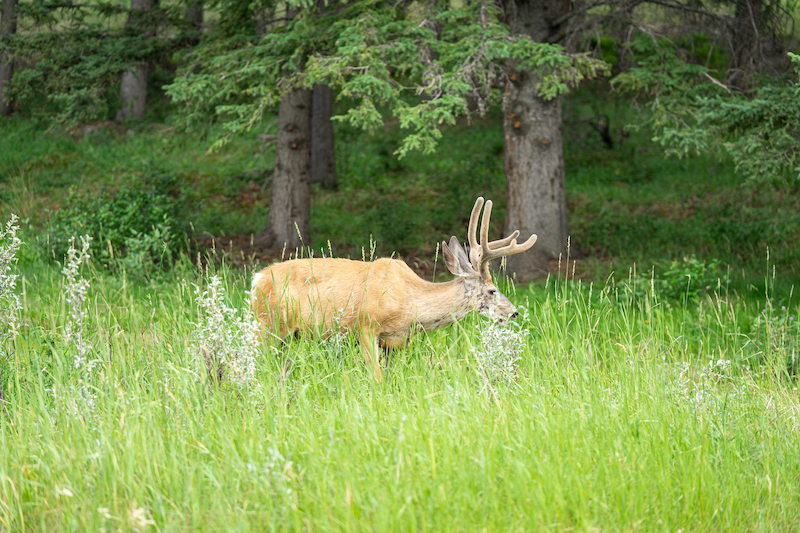
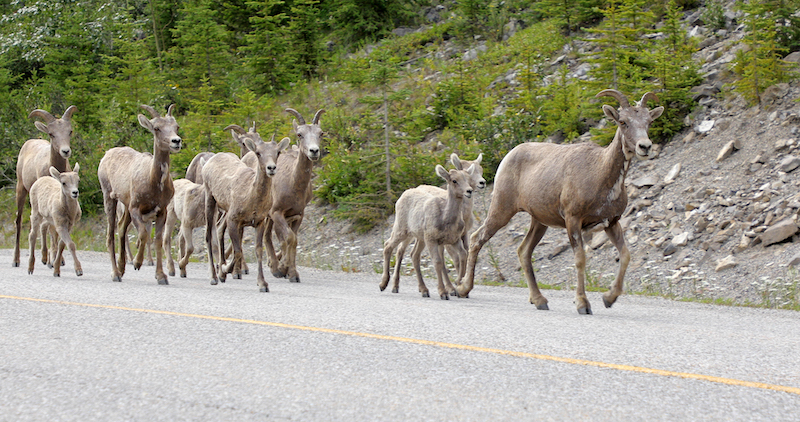
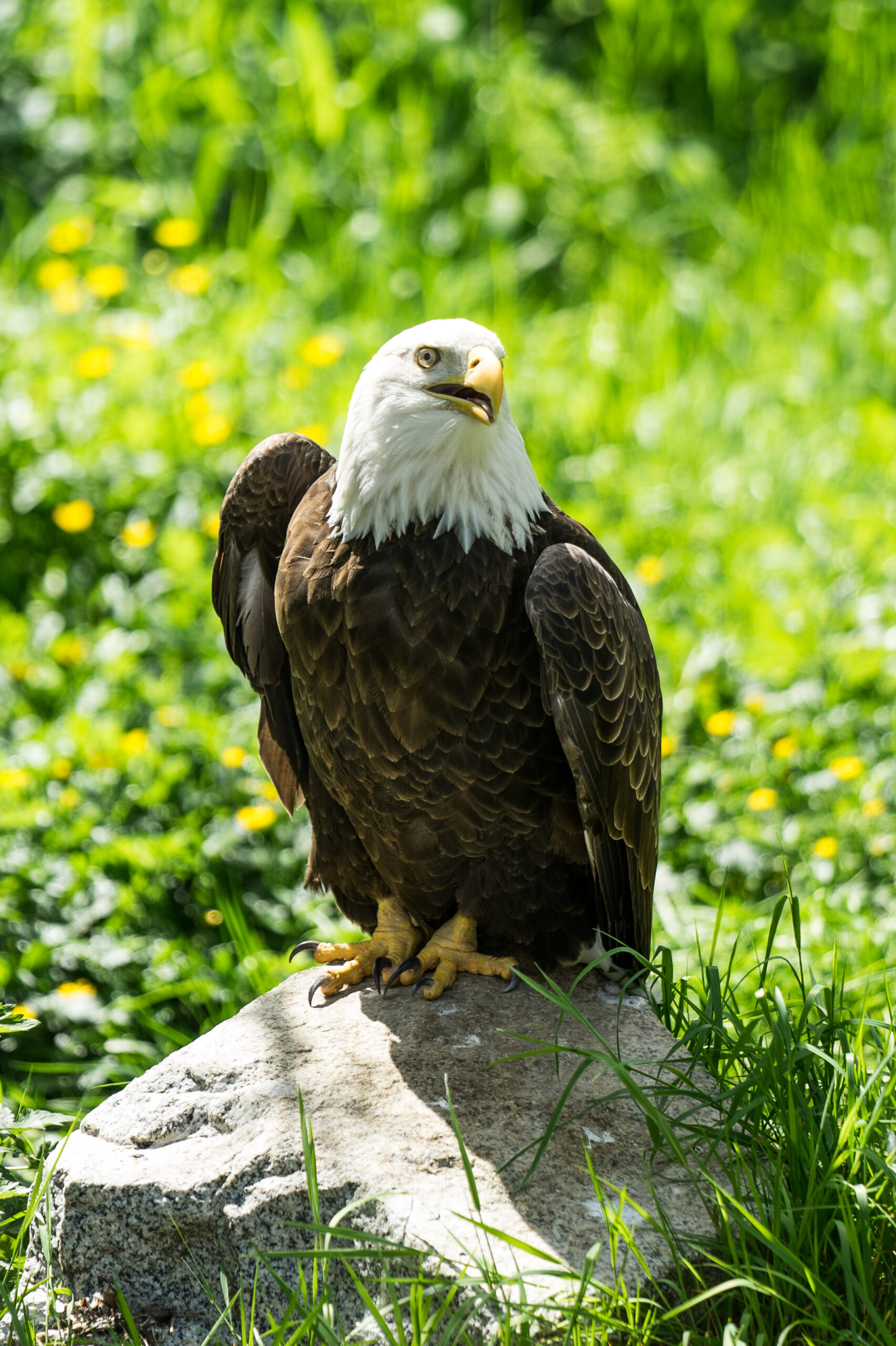
What Are the Best Places to See Wildlife in the Rockies?
Banff National Park
This iconic park offers plenty of opportunities to see wildlife in the Canadian Rockies. Elk are frequently seen near the town of Banff, and bears are commonly spotted along the Bow Valley Parkway.
Location highlights:
– Lake Louise: Look for bears and elk in the early morning.
– Bow Valley Parkway: A prime wildlife corridor with lower speed limits for safe spotting.
Jasper National Park
Jasper’s quieter roads and larger wilderness areas mean fewer crowds and more wildlife.
Location Highlights:
– Maligne Lake: Good chance of spotting moose and bears.
– Athabasca River: Look for bald eagles, osprey, and even beavers near the banks.
Icefields Parkway
Known as one of the most scenic drives in the world, this route between Banff and Jasper is also a wildlife hotspot. Watch for bears and sheep near road edges, goats on cliffs, and rare sightings of wolves or foxes.
What Are the Best Times of Day for Wildlife Viewing?
Early Morning (Dawn): Best for seeing moose, elk, and even bears before the heat sets in. Animals are more active and easier to spot with less human noise around.
Midday: Wildlife tends to rest in shady areas, but you may still spot birds, marmots, or sheep near water.
Evening (Dusk): Another great window for larger mammals like bears and elk. Light is softer and ideal for photography.
Weather Tips: Contrary to popular belief, overcast days are better than hot sunny ones; animals stay active longer. Rain can reduce visibility but often brings animals closer to roadsides.
Guided Tours vs. Self-Guided Wildlife Viewing
Advantages of Guided Tours
– Expert knowledge: Guides know animal habits, safety protocols, and seasonal hotspots.
– Better odds: Increased chances of sightings through radio updates and recent location info.
– Safety: Trained professionals manage distances and behaviours that reduce human-animal conflict.
– Learning: Get fascinating facts about animal biology, ecology, and cultural significance.
Challenges of Self-Guided Wildlife Viewing
– You may miss sightings: Without local knowledge, you could pass right by wildlife without noticing it.
– Safety risks: Unfamiliar visitors may unknowingly get too close or act unsafely around wildlife.
– Less rewarding: Harder to interpret animal behaviour without guidance.
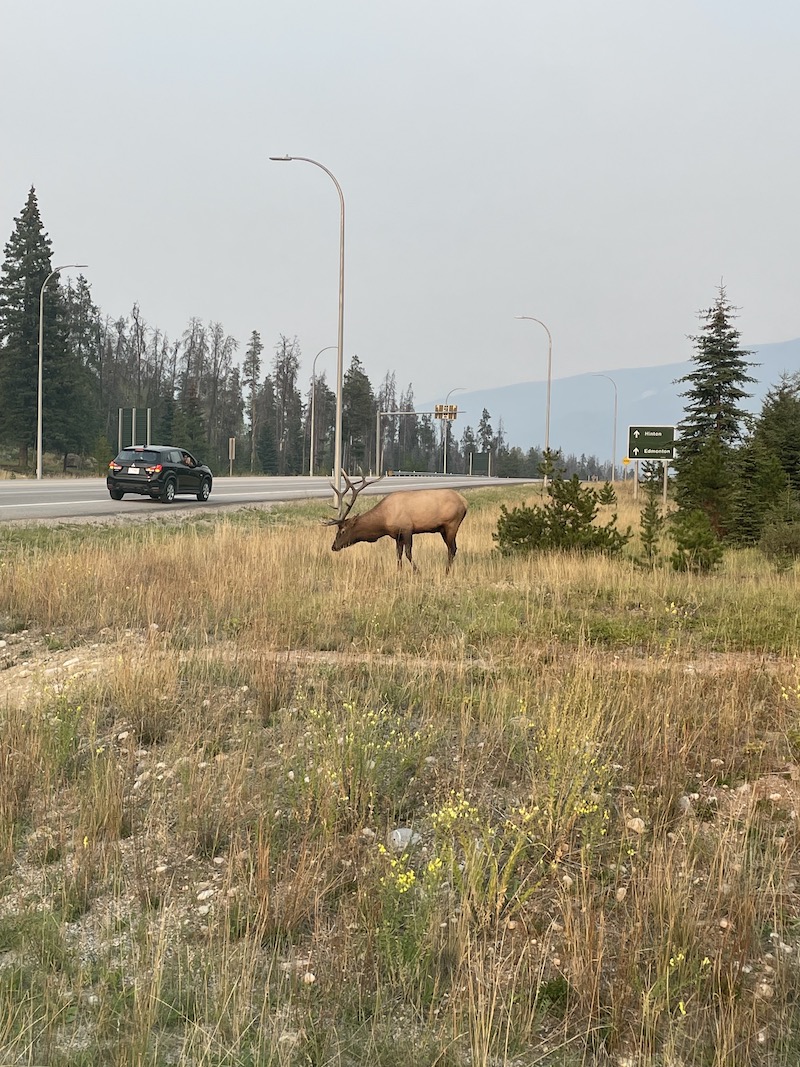
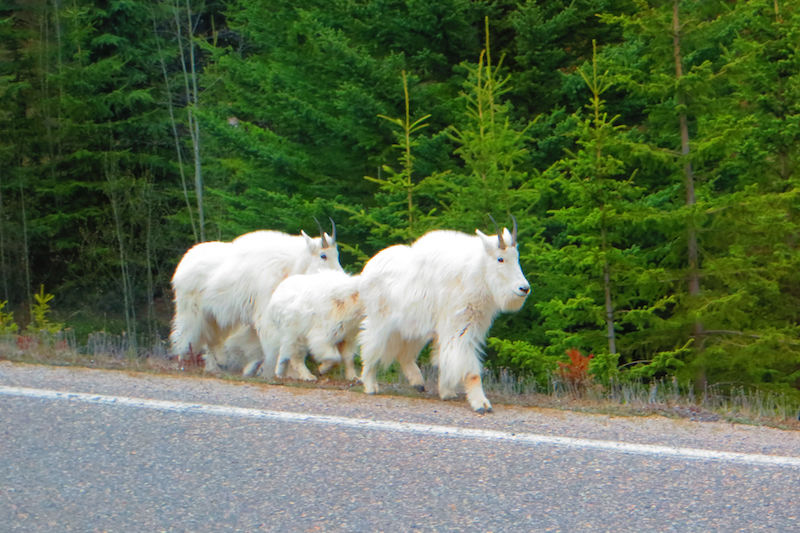
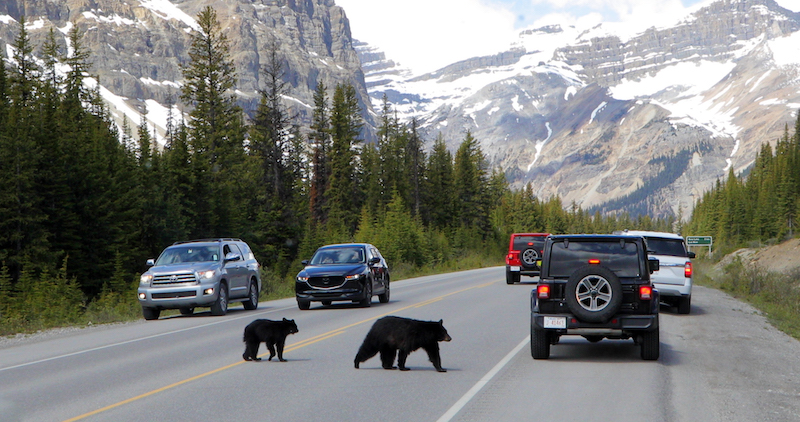
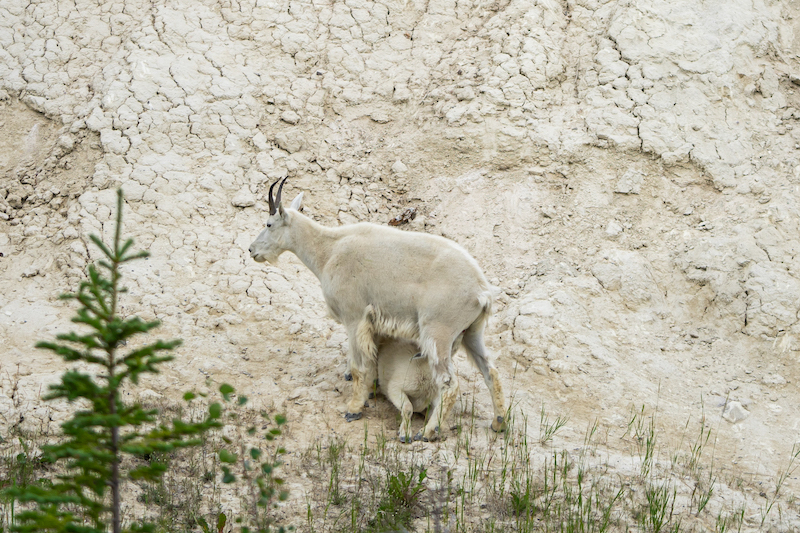
Safety Tips for Travellers Viewing Wildlife in the Canadian Rockies
Keep a safe distance (these are approximate recommendations):
– Bears: At least 100 metres
– Moose, elk, sheep, goats: At least 30 metres
– Birds: Use a zoom lens instead of moving closer
If you see a bear:
– Stay calm and DO NOT run
– Back away slowly and talk calmly
– Carry bear spray and know how to use it. If you travel with a tour guide, please refer to their recommendations
– In a vehicle? Stay inside, windows up
Wildlife photography etiquette:
– Never bait or call animals
– If you have one, use a telephoto lens
– Turn off flash and keep quiet
Do not feed wildlife:
– It can cause animals to become aggressive or dependent on humans
– Feeding puts both the animal and future visitors at risk
What to pack for wildlife viewing:
– Binoculars
– Camera with zoom lens
– Quiet, neutral-coloured clothing
– Water and sunscreen
– Bear spray (if hiking independently)
Book Your Wildlife in the Canadian Rockies Tour Today
Wildlife in the Canadian Rockies is one of the region’s most popular attractions, and summer is the best time to experience it. From moose and grizzlies to golden eagles and even chipmunks, the biodiversity of this region is truly special.
Whether you’re a professional photographer or a family exploring Western Canada and the Rocky Mountains for the first time, guided tours offer the safest, most educational, and often most successful way to spot wildlife. In addition, you will meet fellow travellers and enjoy an array of additional inclusions that will make your experience one you will never forget!
Ready to experience the Canadian Rockies with expert guides and front-row seats to nature?




